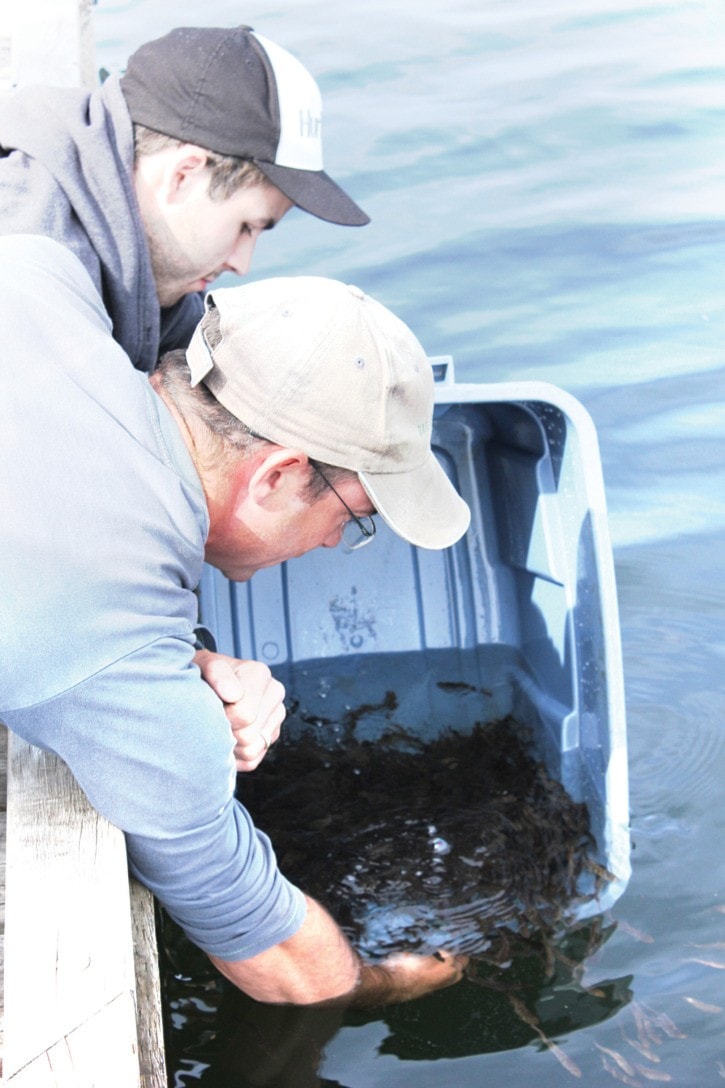As Bob Crandall, president of the Cowichan Lake Salmonid Enhancement Society, fishes the last 2,000 coho out of the tanks at the Lake Cowichan Hatchery, he’s already thinking about the fry (young salmon) that will have to be salvaged out of local streams as water levels lower and streams begin to dry up.
Crandall is concerned about the different species of salmon that end up caught in pools in sections of Beadnell Creek.
He uses special nets, constructed in the ancient First Nation’s style by experts on Salt Spring Island, to scoop the fish from the rivers.
He says that he rescues tens of thousands of fry each year, but does leave a certain percentage to die off naturally or to be eaten by raccoons or other small animals, at the request of the Department of Fisheries and Oceans.
But on June 15, Crandall and Kevin Lowe, a volunteer at the hatchery, are focussed on moving the remaining coho fry from the hatchery to Beaver Lake.
The tanks at the hatchery are fed most of the year by runoff from Beadnell Creek, and the rest of the time from a pump which brings water from the small creek that runs next to the building.
“When the pump kicks in, you know Beadnell is getting low,” explains Crandall.
As he and Lowe scoop the fry with nets into a bucket, and then into water filled containers in the back of Crandall’s truck, he explains that the fish are not fed for 24 hours before they are released, so they are motivated to find food in the wild.
Once loaded, Crandall and Lowe drive out to Beaver Lake where they are met by Frank Worsely, the grounds manager at Beaver Lake Resort. Joe Balmar, and a couple of other residents also wander over to give a hand and watch the release of the coho fry.
Worsley loads up the two water and salmon filled containers onto the back of his John Deer Gator and brings them to the dock, where the water is a cooler temperature than along the shoreline.
“You have to check the temperature of the water the fish are in and the temperature of the lake,” says Crandall. “If there is more than a five degree difference (either way) it can kill them.”
Crandall instructs Lowe and Worsley to lower the containers full of fish into the lake from the dock, and slowly allow the water in the containers to rise to the temperature of the lake before releasing the fish.
These fry were harvested from salmon in the fall, and will remain in the lake until sometime between November and January before they make their way towards the ocean.
